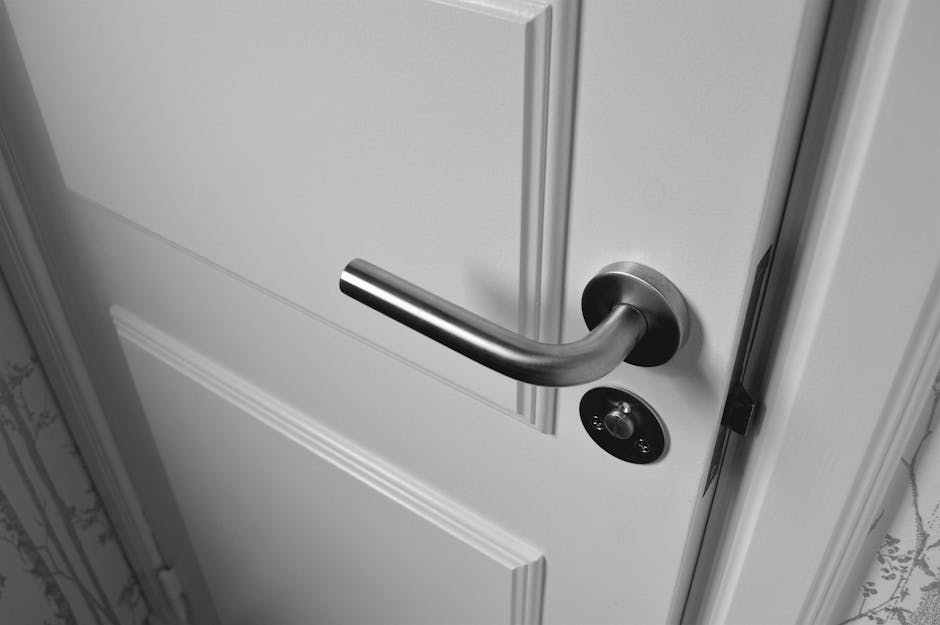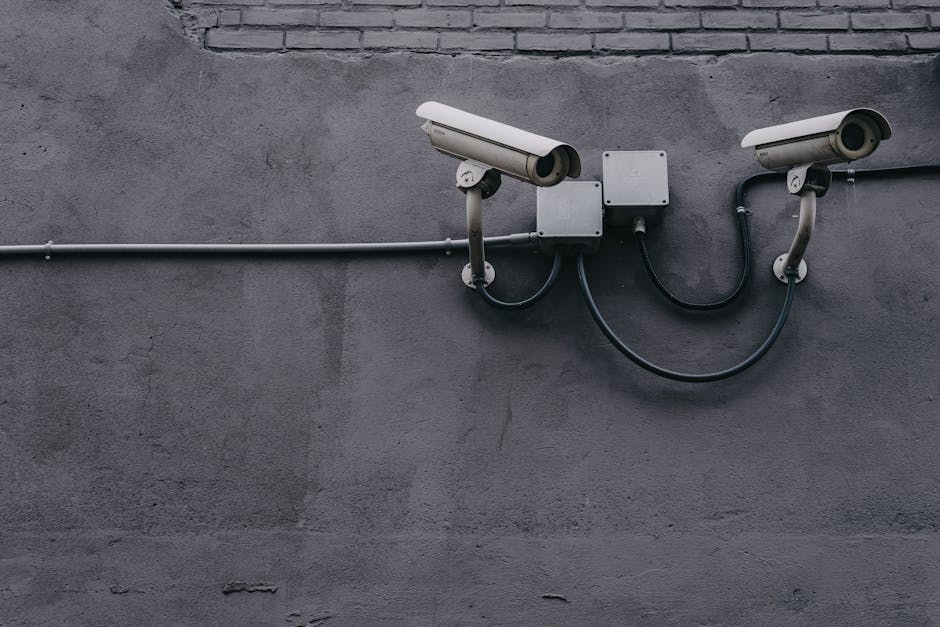- Introduction to Home Surveillance: The Evolution of Security Technology
- AI and Smart Security Cameras: A Technological Overview
- Benefits of Integrating AI with Smart Security Cameras
- Proactive Threat Detection: How AI Algorithms Identify Risks
- Privacy and Ethical Considerations in AI-Powered Home Surveillance
- Case Studies and Real-World Applications of AI in Home Security
- Future Trends and Predictions for AI-Driven Home Surveillance Systems
Introduction to Home Surveillance: The Evolution of Security Technology
Home surveillance has come a long way since its inception, driven by technological advances and evolving security needs. Historically, security systems were primarily reactive, relying on manual monitoring and post-incident footage review. Over the decades, this approach has significantly transformed, integrating various technologies to enhance both effectiveness and convenience.
In the early stages, Closed-Circuit Television (CCTV) systems represented a major breakthrough. Introduced in the mid-20th century, CCTV allowed for continuous monitoring and recording of specific areas, often used in high-security zones like banks and airports. While revolutionary at the time, these systems had limitations, including high costs, limited storage capacity, and the necessity for human oversight to detect incidents.
With the advent of digital technology and the internet, surveillance systems started to become more accessible and sophisticated. The shift from analog to digital meant that video footage could be stored more efficiently and accessed remotely. Network cameras, or IP cameras, emerged, enabling video data to be transmitted over the internet and viewed from virtually anywhere. This significantly expanded the usability and flexibility of home surveillance setups.
A pivotal development in home surveillance technology was the integration of smart features. Motion detection sensors and mobile alerts became standard, allowing homeowners to be instantly notified of suspicious activities. Smart security cameras, equipped with high-definition image sensors and night vision capabilities, offered clearer and more reliable video footage.
Today, artificial intelligence (AI) is setting new benchmarks in home security. The incorporation of AI technologies into smart security cameras represents the latest evolution in this sector. AI-enhanced cameras are capable of analyzing video footage in real-time, identifying patterns, and distinguishing between normal activities and potential threats. This shift from passive to proactive surveillance marks a significant leap in ensuring home safety.
As we advance, AI’s role in home surveillance is expected to deepen, promising more sophisticated threat detection and prevention capabilities. This evolution from manual, reactive systems to AI-integrated, proactive solutions underscores the dynamic nature of security technology and its ongoing transformation to meet contemporary demands.
AI and Smart Security Cameras: A Technological Overview
Artificial Intelligence (AI) has made significant strides in various sectors, and home surveillance is one such area where its influence has been profoundly transformative. Combining AI with smart security cameras has enhanced the capabilities of traditional systems, pivoting from simple, passive surveillance to dynamic, interactive, and intelligent monitoring solutions.
One of the primary benefits of integrating AI with smart security cameras is the ability to leverage advanced machine learning (ML) algorithms. These algorithms enable cameras to perform complex tasks such as differentiating between humans, animals, and objects. This categorization is pivotal for reducing false alarms, which are common issues in conventional security systems.
An essential aspect of AI-driven surveillance systems is their ability to continuously learn and improve from vast amounts of data. Deep learning, a subset of ML, plays a crucial role in this. By analyzing an extensive dataset of video footage, smart cameras can identify patterns and predict potential security threats with higher accuracy.
Below is an overview of key features enabled by AI integration in smart security cameras:
| Feature | Description |
|---|---|
| Object Recognition | Identifies various objects within the camera’s field of view, distinguishing between humans, vehicles, and other inanimate objects. |
| Facial Recognition | Matches faces captured on camera to a database of known individuals, enhancing identification and tracking capabilities. |
| Behavior Analysis | Analyzes movements and behaviors to detect unusual or suspicious activities, facilitating early threat detection. |
| Automated Alerts | Sends real-time notifications to homeowners or security personnel in case of a detected threat or anomaly. |
Another impactful technology employed in AI-integrated security cameras is natural language processing (NLP). By interpreting and responding to verbal commands, these cameras can be seamlessly integrated with other smart home devices, creating a cohesive and user-friendly security ecosystem.
Additionally, AI-enhanced surveillance systems benefit from image enhancement techniques. These techniques improve the clarity and resolution of video feeds even under low-light conditions, ensuring reliable monitoring round-the-clock.
Despite these advancements, it is important to consider the challenges associated with AI integration in home security. High computational requirements and the need for robust data privacy measures are crucial factors that developers and consumers must address. As this technology continues to evolve, ongoing innovation and regulatory oversight will be key to unlocking its full potential while safeguarding user interests.
Benefits of Integrating AI with Smart Security Cameras
The integration of AI with smart security cameras brings a multitude of benefits that significantly enhance the capabilities of home surveillance systems. By harnessing advanced AI technologies, these systems provide heightened security, efficiency, and user convenience.
One of the primary advantages is the accuracy in threat detection. Traditional security systems often rely on motion sensors, which can lead to false alarms triggered by non-threatening movements such as pets or weather conditions. AI-enhanced cameras use sophisticated algorithms to differentiate between humans, animals, and inanimate objects, reducing the rate of false alarms and ensuring that alerts are meaningful and actionable.
Another significant benefit is the real-time monitoring and alerting. AI-powered cameras can analyze footage in real-time, allowing for immediate notification to homeowners or security services in the event of a potential threat. This instant response capability can be crucial in preventing or mitigating incidents such as break-ins or vandalism.
Moreover, the use of AI enables behavioral analysis. Advanced systems can learn and recognize patterns of usual activity around the home, distinguishing between normal and unusual behavior. This capability allows the system to alert users to potential security breaches based on deviations from established patterns.
AI integration also offers enhanced facial recognition technology. Some smart cameras can identify familiar faces, differentiating between residents and strangers. This not only enhances security but also adds a layer of personalized automation, such as unlocking doors for recognized individuals.
In terms of data management, AI streamlines the process by enabling more efficient storage and retrieval of important footage. By using data compression and intelligent filtering, these systems store only relevant clips, reducing the need for extensive storage space and making it easier to locate specific events.
The capability for smart integration with other home systems adds another layer of convenience. AI-powered security cameras can interface with smart home devices such as lighting, alarms, and locks, creating an interconnected ecosystem that can automate responses to potential threats. For instance, if a camera detects a suspicious activity, it can trigger exterior lights to deter intruders or lock doors to prevent unauthorized entry.
Finally, the constant evolution of AI technology ensures that home surveillance systems become more robust and intelligent over time. Machine learning algorithms allow these systems to continuously improve their accuracy and functionality through exposure to new data, ensuring that the security measures remain up-to-date and effective against emerging threats.
In summary, the integration of AI with smart security cameras offers significant advancements in home surveillance, enhancing accuracy, real-time response, behavioral analysis, facial recognition, data management, smart integration, and continuous improvement, all of which contribute to a safer and more secure living environment.
Proactive Threat Detection: How AI Algorithms Identify Risks
Proactive threat detection is a cornerstone of modern home surveillance systems, allowing for real-time response and heightened security. At the heart of this capability are AI algorithms that can recognize potential risks more efficiently and accurately than traditional methods. Companies like Praos leverage these powerful algorithms to ensure the safety of your home and family through state-of-the-art technology.
At Praos, the focus is on creating a connected home experience that seamlessly integrates security, automation, and surveillance through one unified app. This integrated approach allows Praos to deploy AI algorithms that continuously monitor and evaluate data from smart security cameras. Here’s how these algorithms work:
- Object Recognition: Advanced AI algorithms can distinguish between different objects, such as identifying whether a moving figure is a person, animal, or vehicle. This specificity helps in reducing false alarms and focusing on genuine threats.
- Behavior Analysis: By analyzing the behavior of objects, AI can discern suspicious activities. For instance, loitering or unusual movement patterns can trigger alerts, prompting immediate action.
- Facial Recognition: This technology allows the system to identify and differentiate between known and unknown individuals. Coupled with a monitored new system plan, this capability enhances the precision of threat detection.
- Real-time Notifications: AI-driven systems provide instant alerts to homeowners through the connected app, ensuring that any potential risk is communicated without delay.
The following table illustrates the significant improvements introduced by integrating AI with smart security cameras:
| Feature | Benefit |
|---|---|
| Object Recognition | Reduces false alarms by identifying the specific nature of moving objects. |
| Behavior Analysis | Enables detection of suspicious activities based on movement patterns and behaviors. |
| Facial Recognition | Distinguishes between familiar and unfamiliar faces, enhancing security. |
| Real-Time Notifications | Delivers immediate alerts for quick response to potential threats. |
Praos’ commitment to safety extends beyond installation and basic monitoring. With rates starting at just $19.95 per month, Praos provides free equipment and installation for new customers as part of a monitored new system plan. Their experienced team collaborates with clients to customize smart home systems that adhere to individual needs and financial constraints.
In conclusion, the proactive threat detection capabilities of AI algorithms in smart security cameras represent a significant advancement in home surveillance. By choosing Praos, homeowners invest in a robust, reliable system that keeps them informed and secure, ensuring peace of mind no matter where they are.
Privacy and Ethical Considerations in AI-Powered Home Surveillance
The implementation of AI-powered home surveillance systems brings significant privacy and ethical considerations. As AI capabilities expand, it is essential to address these concerns to ensure that the technology is used responsibly and effectively without infringing on individual rights.
Data Privacy
AI-driven security cameras collect vast amounts of data, including video footage and personal information. Ensuring data privacy is crucial. Legislations like the General Data Protection Regulation (GDPR) in Europe and the California Consumer Privacy Act (CCPA) in the United States set guidelines for data handling. Complying with these regulations helps protect consumers’ data from misuse or unauthorized access.
Key Data Privacy Measures
- Encryption: Encrypting stored and transmitted data to prevent unauthorized access.
- Data Minimization: Collecting only the necessary data required for specific functions and avoiding excessive data collection.
- User Consent: Obtaining explicit consent from users before collecting and using their data.
- Access Controls: Implementing strict access controls to limit data access to authorized personnel only.
Ethical AI Usage
Ethical considerations in AI revolve around fairness, accountability, and transparency. Ethical deployment of AI in home surveillance entails ensuring that AI algorithms do not exhibit biases or discriminate against individuals based on race, gender, or other protected characteristics. Moreover, system transparency helps users understand how AI decisions are made.
Principles of Ethical AI
- Fairness: Developing AI algorithms that perform equally well across all demographics to prevent discriminatory practices.
- Accountability: Establishing accountability frameworks to hold organizations responsible for AI-driven decisions and actions.
- Transparency: Ensuring AI processes and decision-making criteria are clear and understandable to users.
Surveillance and Civil Liberties
There are concerns that increased surveillance could infringe on civil liberties. It is important to balance security needs with the fundamental rights of individuals. Over-monitoring can lead to a feeling of constant surveillance, which can impact the freedom and privacy of residents.
Balancing Surveillance and Privacy
- Opt-In Policies: Giving residents the choice to opt-in for surveillance within their private premises.
- Regulation Compliance: Adhering to local and international privacy laws to protect civil liberties.
- Resident Control: Allowing residents to control and manage their surveillance systems, including data access and deletion options.
Conclusion
As AI integration in home surveillance advances, addressing privacy and ethical concerns is paramount. Effective regulations, ethical AI practices, and transparent operations can help build trust and ensure that the benefits of AI-powered home surveillance are realized while minimizing potential risks to privacy and civil liberties.
Case Studies and Real-World Applications of AI in Home Security
Case studies and real-world applications of AI in home security demonstrate how the integration of artificial intelligence with smart security cameras is transforming the field. A critical review of various implementations illustrates both the capabilities and practical benefits of these advancements.
One notable case involves the collaboration between Google’s Nest Cam and its AI-powered platform. The Nest Cam has incorporated advanced AI algorithms to improve motion detection and reduce false alarms. According to a report from Google, the implementation of AI has resulted in a 50% reduction in false alerts, making the system more reliable for homeowners.
Similarly, Amazon’s Ring cameras have leveraged AI and machine learning to distinguish between different types of movement. For instance, AI can discern between a passing car, an animal, or a person approaching the house. This feature enhances the accuracy of alerts and minimizes unnecessary notifications. Amazon has reported that user satisfaction has significantly increased due to these improvements in detection accuracy.
Another significant example is the use of AI by the Arlo Ultra security system. Arlo Ultra employs AI-powered object detection to differentiate between various objects such as vehicles, animals, and packages. This capability allows users to customize alerts and set specific zones for monitoring. In tests conducted by an independent review, Arlo’s AI-driven system achieved a detection accuracy rate of over 90%, highlighting its efficiency and utility in real-world scenarios.
Let’s summarize some of these observations in a table.
| Security Platform | AI Integration Outcome |
|---|---|
| Google Nest Cam | 50% reduction in false alerts |
| Amazon Ring Cameras | Increased detection accuracy and user satisfaction |
| Arlo Ultra | Detection accuracy rate over 90% |
Beyond these consumer products, AI-driven home security has also been applied in property management and community security systems. For example, in residential complexes, AI-enabled surveillance can monitor shared spaces like lobbies and parking areas, identifying potential threats and deterring criminal activities in real-time.
Moreover, advancements in deep learning have facilitated the development of facial recognition systems. These systems can identify individuals from a pre-approved list and alert homeowners of any unrecognized persons approaching their property. While facial recognition in home security raises essential privacy concerns, its application in secure environments, such as gated communities, has already shown promising results in enhancing security measures.
In summary, the integration of AI with smart security cameras is proving to be a game-changer in home surveillance. Real-world applications and case studies highlight the substantial benefits of enhanced detection accuracy, reduced false alerts, and improved overall security, underscoring the significant impact of these technologies in protecting homes and communities.
Future Trends and Predictions for AI-Driven Home Surveillance Systems
The landscape of home surveillance is poised for remarkable transformations, driven by advancements in artificial intelligence (AI) and its integration with smart security cameras. As technology evolves, several emerging trends and predictions are likely to shape the future of AI-driven home surveillance systems.
Increased Adoption of Edge Computing
Edge computing, which involves processing data closer to where it is generated, is expected to become more prevalent in home surveillance. By leveraging this technology, smart cameras can analyze data in real-time without relying heavily on cloud-based servers. This reduces latency and enhances the responsiveness of threat detection systems.
Improved Object Recognition and Tracking
AI algorithms are rapidly advancing in their ability to recognize and track objects. Future smart security cameras will likely feature enhanced object detection capabilities, distinguishing between people, animals, vehicles, and other entities. This improvement will help in minimizing false alarms and ensuring more accurate threat detection.
Integration with IoT Devices
The integration of AI-driven home surveillance systems with other Internet of Things (IoT) devices will create more comprehensive security ecosystems. For instance, smart cameras may work in conjunction with smart locks, lighting systems, and audio sensors to provide a holistic security solution, enhancing the overall effectiveness of home surveillance.
Advanced Behavioral Analytics
Future AI systems are anticipated to incorporate advanced behavioral analytics, which will analyze patterns and activities over time. This means that smart cameras will not only detect immediate threats but also recognize unusual patterns of behavior that may indicate potential security risks, allowing for proactive threat mitigation.
Enhanced Data Privacy and Security
As the scope of AI-driven surveillance expands, so does the need for robust data privacy and security measures. Future systems are expected to incorporate stronger encryption methods, data anonymization, and compliance with stringent data protection regulations to address privacy concerns while leveraging the benefits of advanced AI technologies.
Customization and Personalization
AI-driven home surveillance systems will likely offer greater customization and personalization options. Users will be able to tailor their security settings based on specific needs and preferences, such as setting customized alert thresholds, defining specific zones for monitoring, and receiving personalized security recommendations.
Collaboration with Law Enforcement
The future of home surveillance may also see increased collaboration between AI-driven systems and law enforcement agencies. By sharing critical security data and insights through secure channels, these systems can aid in crime prevention and investigation, enhancing community safety.
In conclusion, the future of home surveillance with AI integration promises significant advancements in security, efficiency, and customization. By keeping pace with these trends, homeowners can look forward to more intelligent, responsive, and secure surveillance solutions.






